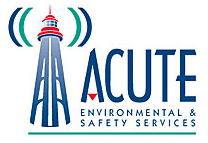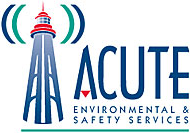
Many workplaces in many different fields contain areas that are considered “confined spaces.” Confined spaces have limited entry and exit points and were not necessarily designed with human entry in mind. However, they are just large enough for workers to access. Confined spaces can be extremely dangerous, as excessive heat, toxic gasses, and even explosive atmospheres can quickly become health hazards for those entering them. In this article, we’ll take a look at the science behind the hazards of confined spaces to help you better understand these potential hazards. Remember that the best way to stay safe in confined spaces is to complete hands-on, practical confined space training. Contact the experienced experts at ACUTE today to learn more about your training options!
Want To Learn More About Health & Safety Training?
![]()
The Science Behind The Hazards Of Confined Spaces
Confined spaces are found in many different workplaces that require workers to enter manholes, wells, tunnels, silos, tanks, vaults, and more. Some common occupations that often work within confined spaces include farming, mining, construction and trades, and rescue occupations (such as firefighters). However, almost any job can include confined space entry.
If you are new to the world of confined spaces, you may be wondering why they are so dangerous. Confined spaces are dangerous for a number of reasons. First, there is limited air flow in a confined space. This issue causes an increased risk of inhaling toxic fumes, not getting enough oxygen, and can cause dangers from dust. There are also very few entry and exit points, so escaping fire or flooding becomes significantly more difficult. In this section, we will look at the science behind each hazard, and how knowing more can help you can stay safe on the job.
Confined Space Hazard #1 – Toxic Atmosphere

A toxic atmosphere occurs when the confined space you are working in contains toxic gasses. Common gasses found in confined spaces include:
- Hydrogen Sulfide
- Methane
- Ammonia
- Carbon Dioxide
- Carbon Monoxide
Some gasses, such as carbon monoxide, are odourless and colourless – meaning you could quickly find yourself in a carbon monoxide-filled environment without even knowing it. Carbon monoxide is highly toxic and can become lethal in extremely small doses – sometimes less than a 1% saturation can cause death. Check out the video below to learn more about carbon monoxide and other toxic gases in confined spaces.
Other gasses, such as the gasses found in storage silos, do have an odour or colour. Some gasses may look red, brown, or yellow-tinged. If you are working on a farm and notice a gas with colour, it is advised that you do not enter the confined space for at least 6 weeks to ensure the gas has properly cleared. Hydrogen sulfide has a strong smell, similar to rotten eggs. However, in high doses, it can actually block your sense of smell – making it difficult to detect. It can also become lethal within seconds. It’s important to always test for gasses along the way and at different levels. Employers should also provide workers with information on dealing with toxic gasses and provide appropriate equipment.
Confined Space Hazard #2 – Oxygen Deficiency

Oxygen deficiency occurs in confined spaces where not enough oxygen is present in the atmosphere. Of course, you cannot see or smell oxygen in confined spaces and therefore it is impossible to tell if an area is oxygen deficient by simply looking in. See the video below to see a simulated emergency situation regarding oxygen deficiency in a confined space.
If you enter an oxygen deficient confined space, the lack of oxygen can begin to take effect after your very first breath. Signs of oxygen deficiency include dizziness, changes in behaviour, fatigue, and eventually death. How does oxygen deficiency occur in confined spaces? There are many ways that a confined environment may develop a lack of oxygen. A growth of certain microorganisms that consume oxygen can lead to lower levels. Rusting, combustion, and displacement of oxygen by other gasses can also significantly lower oxygen levels. It is important to frequently test for oxygen levels, as deficiency can happen unexpectedly and become dangerous extremely quickly.
Confined Space Hazard #3 – Oxygen Rich Enrichment

Another serious hazard you may not be aware of is an oxygen-enriched atmosphere – an atmosphere where oxygen levels exceed more than 23% (regular air normally contains 21% oxygen). Why is too much oxygen a problem? Increased levels of oxygen can create an environment prone to combustion and explosions. Workers should never enter a confined space that contains more than 2% above the average oxygen levels.
Oxygen enrichment can occur from a variety of factors. Some common causes for oxygen enrichment include leaking pipes, liquid oxygen spills, oxygen vents (can create a sudden release without any warning), oxygen used when cutting or welding, and more. Those most likely to come into an oxygen-enriched environment are workers who work with oxygen. It’s important for these workers to know the dangers of oxygen enrichment, how to safely manage a liquid oxygen spill, and what to do in case of combustion and fire.
Confined Space Hazard #4 – Explosive Atmospheres

Explosive atmospheres generally result from oxygen-enriched environments, as the added oxygen make the perfect environment for combustion, fire, and explosions. An atmosphere is considered flammable when the ratio of oxygen to combustible materials in the air is not too rich or too lean (source). Confined spaces are vulnerable to explosions and fires due to the fact that vapours and gasses can quickly accumulate with little to no ventilation. Check out the demonstration video below to see how quickly an explosion can occur in a confined space.
Flammable gasses such as propane, hydrogen, or methane can become heavily concentrated in confined spaces and sink below the oxygen (as they are often heavier than oxygen), finding the lowest space, as shown in the above video. If workers complete activities that create even a single spark or use spray paint that can release explosive gas, an explosion or fire may occur. Chemical reactions, as well as combustible dust, can create explosive atmospheres.
Confined Safety Hazard #5 – Excessive Heat

You are unlikely to find an air conditioner in any confined space! Excessive heat can quickly become a problem for workers, who are often working in hot temperatures and layered in thick protective clothing. Heat stress occurs when your body fails to control its internal temperatures. Excessive heat can cause heat stress or heat stroke, dizziness, fainting, and dehydration. In the video below, a nurse talks about heat stress in confined spaces and preventative measures.
Confined Space Hazard #6 – Flowing Liquids

Flowing liquids are generally an observable issue within a confined space. However, that is not always the case, as a new area or level may contain liquids that previous levels did not. Flowing liquids can become a serious problem as workers may drown or become trapped. Some fluid solids, such as grain, can also drown workers. Silos are extremely dangerous as grain can act in a similar way to quicksand, sucking a worker in without any means of escape.
Get Required Confined Space Training With ACUTE!
Hands-on, practical confined space training is the best way to keep employers and workers safe in the workplace! ACUTE is dedicated to workplace safety and understands the importance of course and training provider approval. ACUTE offers many training courses to help workers, employers, and everyone else involved stay safe on the job. Courses such as Joint Health and Safety Committees, WHMIS 2015 (GHS), and Worker Health & Safety Awareness help workers learn important legislation and health and safety techniques to keep themselves and others safe.
Looking for more ACUTE courses?
Why get workplace safety training with ACUTE? Here are just some of the benefits of working with ACUTE.

- Open Door Instructor-Student Partnership – ACUTE’s training services emphasize client participation. Staff foster relationships with clients and serve as a touchstone for advice anytime moving forward.
- Serving Your Team and Industry – With a vast array of clients in manufacturing, construction, health, academic, and government sectors, ACUTE brings the best safety practices from across the spectrum to your workplace.
- 100 Years Combined Experience – ACUTE provides comprehensive health and safety training, on-site safety services, and consulting services. With over 100 years of combined experience, our company staff offer more than theoretical or abstract ideas. ACUTE offers solutions.
- Track Record of Success – ACUTE is rated 4.9/5 stars on Google reviews, demonstrating a commitment to our clients, quality, and passion for training.
“We have relied on ACUTE for years to train our staff and
keep them safe on the job site.”
– Bob, Millwrighting Company – Read More Testimonials Here!
Click here to see what training courses we have at ACUTE or contact us today for quality training in your workplace or on-site at ACUTE’s proven training facilities!
ACUTE is located in Waterloo, Ontario, and services customers from cities such as Toronto, Mississauga, Brampton, Hamilton, Milton, Kitchener, London, Guelph, and others across Ontario.
Sources
ohsguide.worksafenb.ca /www.labour.gov.on.ca / community.nfpa.org /

